We’ve all been there. You’re exhausted having summited the climb but uncomfortable, too. You’re hot, there’s sweat in your eyes and you’re soaked through.
But hold on, isn’t that a £400 waterproof jacket you’re wearing? Shouldn’t your jersey be nice and dry while the water beads beautifully from the waterproof fabric that’s been engineered by a scientific genius and can only be described using a string of complicated acronyms? So why are you wet?
Staying dry isn’t easy
Don’t get us wrong here, we’ll always pack a waterproof jacket if we’re heading out for a long day in the hills. Being able to keep the worst of the weather out is really important, especially during the cold winter months. But riding in a waterproof jacket – even the super-fancy, expensive ones – isn’t always the most pleasant experience. In fact, at times, it’s kind of gross.
If you’re working hard up a climb or hammering along a fast section of singletrack, it doesn’t take long for your temperature to sky-rocket. Then comes the sweating and, despite the claims around breathability, you can get as wet inside the jacket as you are on the outside. Stand around for too long chatting to your mates and you soon start getting cold. Great.
While there’s no denying some brands and fabrics are better at keeping you dry and managing your body temperature than others, in our experience, it’s rare that they’re perfect.
Are there alternatives that work, though? I've pulled together BikeRadar’s best MTB tech brains – Tom Marvin, Luke Marshall, Alex Evans and myself – to get everyone’s take on the matter.
This is the first instalment in what (we hope) will be a new series called Spoke Tension (see what we did there?), where the BikeRadar team wade in with our unfiltered opinions on the topic of the day.
Robin Weaver – technical editor-in-chief
In praise of windproofs
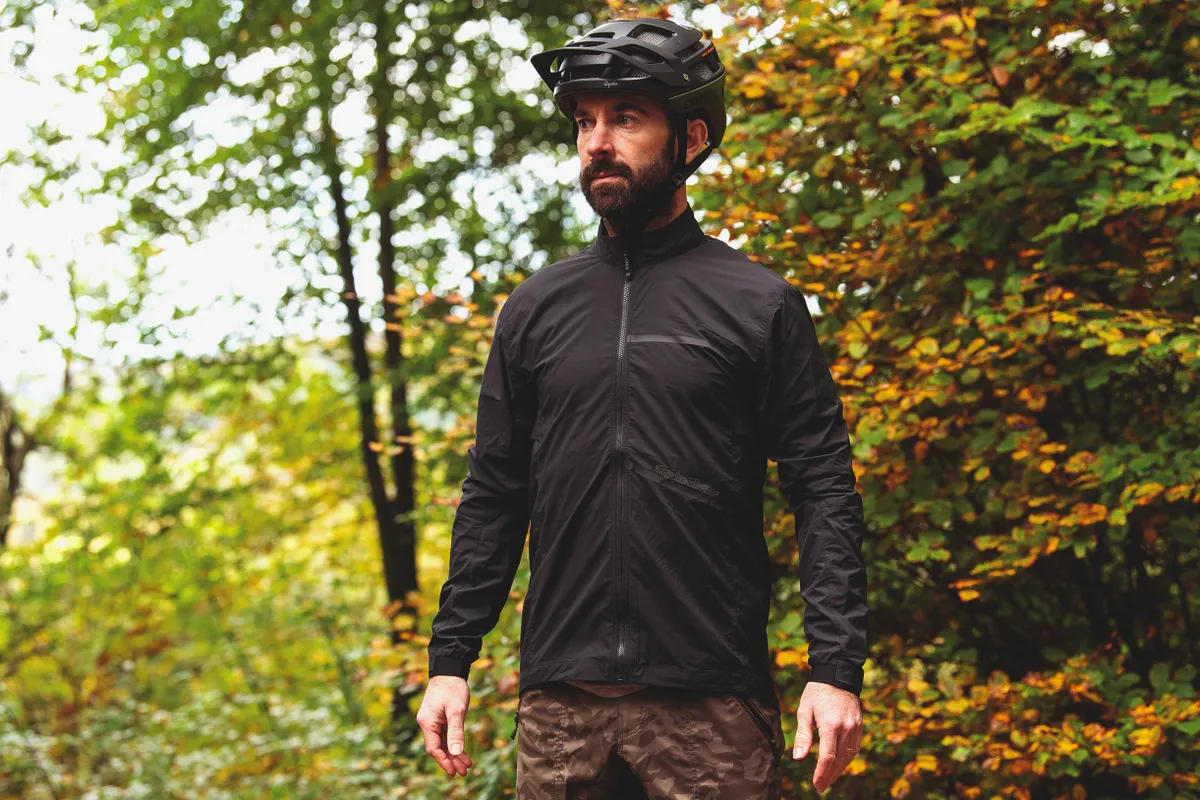
I honestly have mixed feelings about waterproof jackets. On the one hand, the very best waterproof mountain bike jackets do manage to keep the weather out and prevent you from melting, especially if you’re riding at a steady pace. That’s not always the case when mountain biking, though, where even the priciest jackets can fall short.
And it’s for exactly that reason that I generally opt to wear a windproof rather than a waterproof jacket. I came to this conclusion about a decade ago when a load of Gore kit arrived at the office. The only jacket that fitted me comfortably was one of their Windstopper tops. After a few rides in pretty horrific Welsh conditions, I was converted.
Yes, you will eventually get wet, but I’m yet to wear a windproof jacket that’s felt anywhere near as clammy or sweaty as a full-on waterproof top. I figure that if I’m going to get wet regardless, I might as well try to keep my temperature as consistent and comfortable as possible, for as long as I can, rather than melting too quickly. And the windproof element of these jackets really helps in preventing you from getting too chilly during the winter months.
Windproof jackets tend to be a little cheaper than their waterproof equivalents and, as you don’t need to keep re-proofing them, there’s less faff involved with owning one, too. I have an old Vaude jacket from about 10 years ago that’s been worn, hosed off and slung in the washing machine hundreds of times. It lives in my kit bag and, along with the Troy Lee Designs Shuttle jacket, sees more than its fair share of action.
That isn’t to say I don’t use a proper waterproof jacket when I really need to, though. The great jackets do really stand out and, when it’s properly cold and really raining, they’re worth putting on.
Tom Marvin – technical editor
Cut-offs and onesies for the win
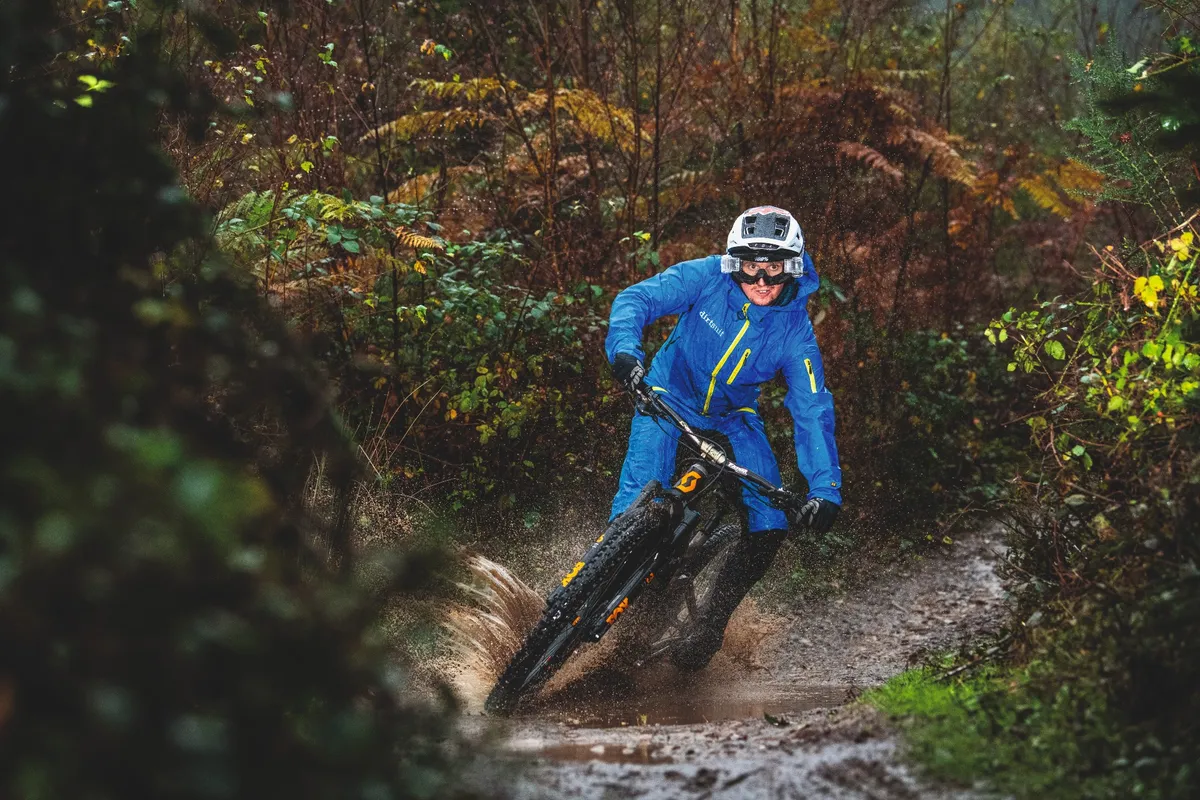
Much like Rob, I’m a big fan of the windproof, and rarely bother with a full waterproof jacket – I’m just too sweaty for it to work a lot of the time.
However, I do have a couple of exceptions to my general anti-waterproof rule – cut-offs and mountain bike onesies.
When you read ‘cut-offs’, you’re probably imagining a pair of rather-too-short denim shorts, fraying at the edges, worn by a cringe-worthy 80s pop star. Fear not, though, as I’m not advocating denim as the ultimate shred-ready outer layer.
A few years ago, at the Eurobike trade show, I spied a jacket, I think made by Vaude, with arms that only extended to just above the elbows. I shrugged it off as some sort of German oddity until earlier this summer.
I was getting ready to race The Merida Ex Enduro and saw that the first stages of day one would be raced in the rain, but that it would clear up later. I wasn’t too stoked on the idea of riding the rest of the day splattered with wet mud, and also knew the wind would be howling on top of Exmoor.
So, I took a worn-out jacket from my wardrobe, and with some kitchen scissors and a T-shirt as a guide, cut the arms off.
Yes, I looked very… quirky. But you know what? My arms got damp yet helped regulate my temperature well, my back stayed dry despite the wind and rain, and my torso was protected from muddy spray. A complete win in my book.
Next up, is the onesie – an item of clothing I’ve eulogised about in the past. When it really is foul outside, and waterproofs are the only option, the onesie comes into its own.
Assuming you’re going to pair your jacket with some waterproof trousers (an infinitely more useful piece of winter MTB clothing, by the way), why not join the two together and avoid the frustration of trousers that sag when plastered in mud, or a jacket that rides up, exposing your lower back to muddy spray?
Yes, they (can) look odd, but trust me – when you go onesie, you don’t go back, especially if your riding involves a lot of uplifts.
While I rarely wear one out pedalling on the trail, during our annual Bike of the Year testing, where a lot of time is spent shuttling up and riding down BikePark Wales, the onesie really does come into its own.
Luke Marshall – technical writer
Vest is best for Luke
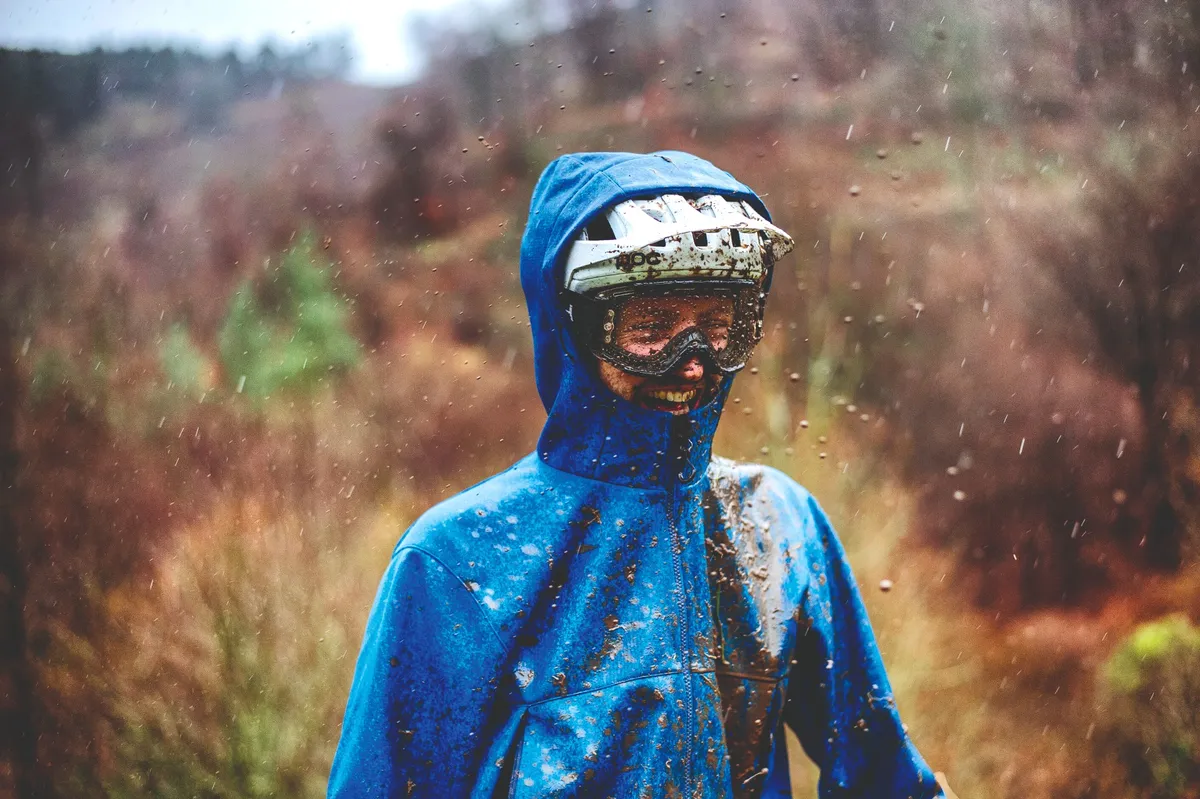
I have a few issues with waterproof jackets. Firstly, their name. Secondly, whether waterproof and breathability ratings stand up to much scrutiny.
That rant is for another day but, keeping on topic here, on some rides the weather is so gross I can’t do without a good waterproof. However, in that scenario I will always choose breathability over waterproof ratings and will often ditch the riding jersey underneath and wear a wool baselayer to help keep me warm, even if I am sweaty.
But what alternatives to the waterproof do I also rely on?
If it’s mixed weather, and I can get away with it, I’m a big fan of a gilet and have two that regularly get called into action: a thinner, windproof Gore top, and a thicker, warmer Fox vest.
They’ll both shrug off a shower or two, and I appreciate the freedom of movement and additional ventilation a gilet offers. It’s also easy to layer up underneath a gilet and, if I know I’m going to keep moving and maintain core warmth, I’ll suffer damp arms if the heavens open.
Knowing that Sam Hill is happy to rock a gilet when needed makes me wonder whether, actually, they’re cooler than perhaps otherwise considered.
Or, maybe, I’m now at that age where function takes priority over fashion. But then, I supported the sleeveless jersey/baselayer look pioneered by motocross star James Stewart with his Seven MX brand, and used this year by Richie Rude and the Yeti team in the Enduro World Series. Maybe I’m just a vest guy…
Anyway, moving on… if the ride’s more social, and the weather’s cold and grotty but it’s not pouring with rain, I’ll grab a softshell.
A softshell will shrug off puddle splashes and a light shower, and is more comfortable and breathable than a hardshell waterproof (we’ve got a separate explainer on hardshell vs softshell jackets).
While these alternative options aren’t ‘waterproofs’, I wash all my outerwear in an eco-friendly waterproofing detergent. This helps keep them a little more winter-friendly, even though it’s probably not ideal for my wallet.
Alex Evans – technical editor
It’s all about the money and there ain’t a damn thing funny
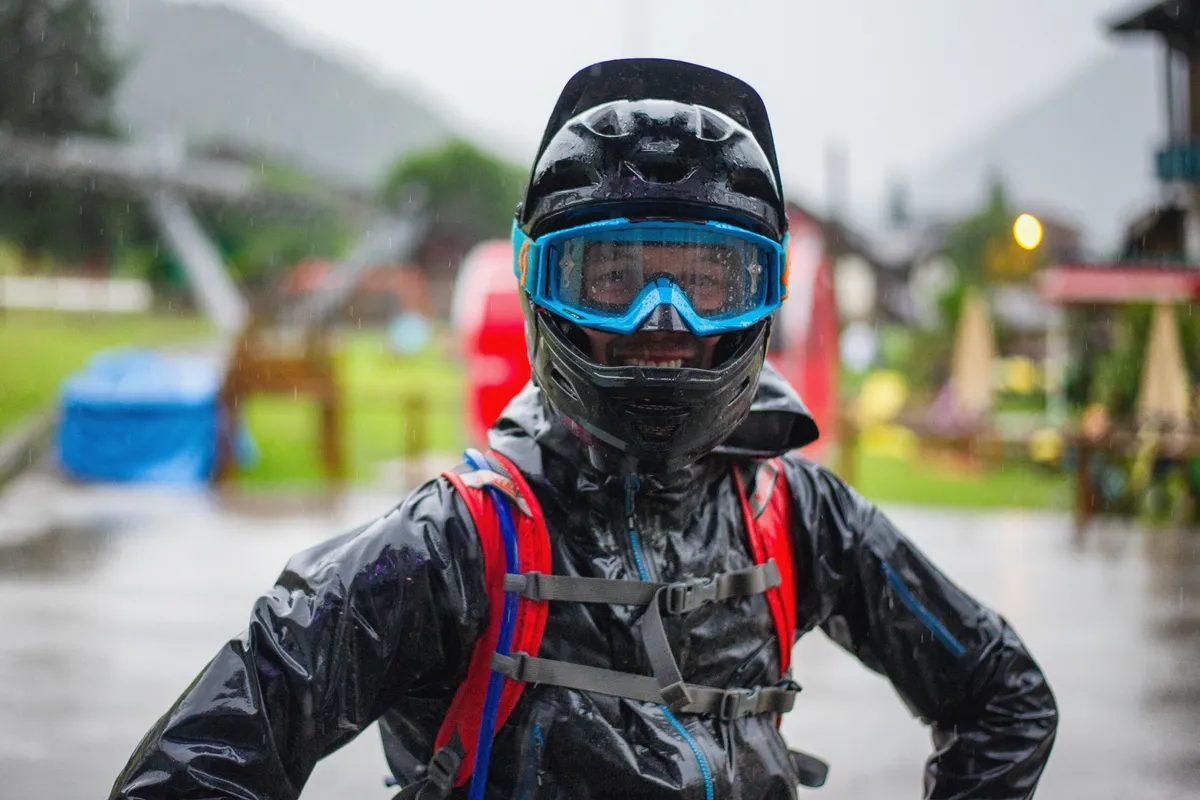
I have spent a not-insignificant amount of my life focused on an ever-growing desire to not spend money on unnecessary things, or waste it on illogical, frivolous purchases. This life-wide motivation extends to areas that might cause ‘normal’ people to raise an eyebrow.
Would I rather sit at 60mph in the slow lane on the motorway to save fuel, than travel at the speed limit and arrive earlier? Yes I would, and yes I do.
Do I set the thermostat in my house to 12.5 degrees in the winter to save money on heating costs? Yes, yes I do.
Have I removed certain bulbs from their fittings in the ceiling, because they aren’t essential, and the remaining ones provide enough light, plus I get to save money? Embarrassingly, yes I have.
And in the world of bikes, prior to landing a job in the industry, I’d convinced myself that grip was a state of mind, and that as long as I believed my tyres would stick to the ground, no matter how worn they were, I would be okay.
I would spend hours meticulously cleaning my drivetrain so it didn’t wear as quickly, and wouldn’t need replacing. And, before a time of tubeless tyres, I would patch, re-patch and then patch again punctured inner tubes.
Clearly, I have a deep-rooted ideology that time is less important than money – except when it comes to being comfortable, warm and dry. While my dear co-workers are almost unanimously saying that, in reality, it’s better to regulate temperature than try to keep dry, I’m going to make a case for the waterproof jacket.
Yes, a hardshell waterproof can feel sticky if you wear a short-sleeve top underneath. Yes, you can also overheat when ambient temperatures increase, or you’re burying yourself on a climb.
But if the construction is good enough to block water ingress, and in the same vein they’re sufficiently breathable to mitigate some of the damp building up internally, the latest jackers are, actually, really quite good.
The thing is, if it’s genuinely wet out there, a waterproof is simply the best tool for the job.
I can think of plenty of times when I’ve gone out riding, wearing a showerproof softshell, and having been caught short in a biblical deluge, the waterproofing has been quickly overwhelmed and my underlayers drenched. It’s nigh-on impossible to stay warm or comfortable from there, let alone recover any semblance of being dry.
Now, in the same circumstances, that cold, ride-ruining rain will have a much harder job of penetrating a proper hardshell waterproof and through into your inner layers, where it sets about reducing your core’s temperature.
Yes, you’ll need to keep moving to maintain body heat, but, in my experience, it’s relatively easy to top up your core temperature, even if it has dropped, and is even easier to just maintain it.
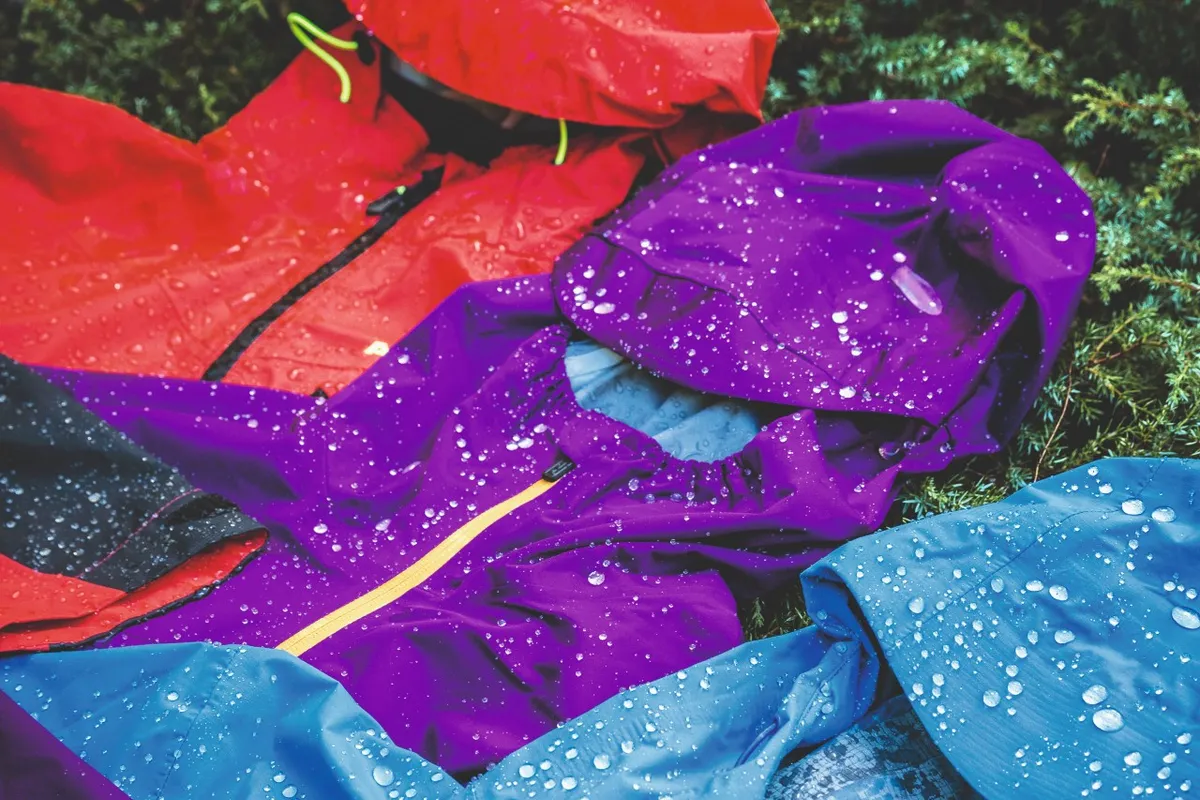
So, are hardshell waterproofs worth the cash? Yes, and no.
The performance of a quality jacket, and your wet-weather happiness, hangs on a balance of waterproofing and breathability. It needs to be genuinely waterproof and reasonably breathable, even if it’s never going to be able to dump all of the heat and moisture you’re capable of producing.
The trouble is, finding a jacket that’s both of those things usually involves spending more cash.
DWR treatments can also be quick to wear or fade. Lightweight jackets can easily rip in a crash or snag on a tree. Seams aren’t always sealed. They can smell. Cleaning a jacket in regular washing powder can reduce its performance. Sweat and grease can also damage the fabric.
Spend the proper amount of time washing and taking care of a jacket, and a good waterproof will last a long time. But if you don’t, you’ve essentially got yourself an expensive, permeable heat and sweat blanket, which is no good.
Yes, softshells, gilets and windproof jackets have their place when it comes to staying comfortable in a range of conditions, but I’ve never cursed a waterproof jacket for keeping me dry but too hot in the same way I’ve expressed disgust at a leaky softshell that’s cut short a winter ride because I was wet, cold and uncomfortable.
That’s reason enough for me to say this: spend as much as you can afford on a quality waterproof jacket. Just make sure you turn the heating down and lights off to save the extra money.
